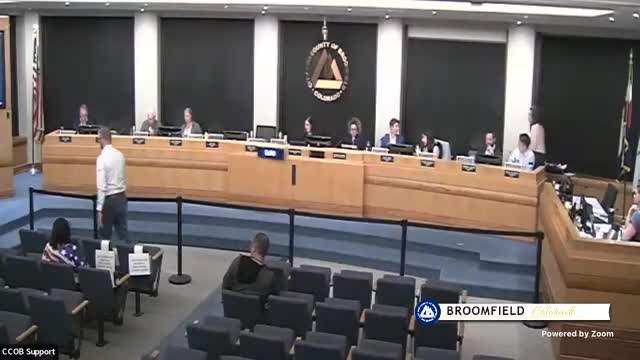Council debates raptor protection amid development concerns
August 28, 2024 | Broomfield County, Colorado
This article was created by AI summarizing key points discussed. AI makes mistakes, so for full details and context, please refer to the video of the full meeting. Please report any errors so we can fix them. Report an error »

During a recent council meeting, members engaged in a detailed discussion regarding the proposed Raptor Plan aimed at enhancing the habitat and protection of raptors in the Broomfield area. Council member Lim raised questions about the types of fencing that would be beneficial for raptor habitats, emphasizing the need to eliminate barbed wire, which poses a significant risk of entanglement for these birds. Rebecca, a wildlife expert, confirmed that wildlife-friendly fencing, which avoids barbed wire, is essential for both raptors and other wildlife, and can also mitigate wildfire risks.
The conversation also touched on the controversial topic of bird-friendly lighting in development projects. Council members expressed concerns about how such requirements might be received by developers. The staff clarified that downward-facing lights with full cutoffs are preferred to reduce glare and protect wildlife.
Council member Leslie inquired about the internal coordination necessary to ensure compliance with these wildlife-friendly practices across various departments. The staff committed to verifying existing fencing types and ensuring that all departments adhere to the new guidelines.
As development continues to encroach on open spaces, council members discussed strategies for helping raptors relocate. The staff highlighted the importance of preserving existing trees and enhancing habitats through native vegetation planting. However, they acknowledged the challenges in encouraging wildlife to move to new areas.
Community involvement was also a key theme, with suggestions for educational programs to engage residents in creating bird-friendly environments in their backyards. The staff provided practical tips, such as reducing pesticide use, keeping pets indoors, and participating in \"lights out\" initiatives during migration seasons.
Council member Wynne raised the question of how success would be measured under the Raptor Plan, with a focus on monitoring bird sightings and nesting success. The staff indicated that a monitoring program would be established to track these metrics.
The meeting concluded with discussions on the ecological role of prairie dogs as a food source for raptors and the ongoing management challenges posed by their presence in urban areas. The council emphasized the need for a balanced approach to wildlife management that respects both ecological needs and community concerns.
Overall, the meeting underscored the council's commitment to protecting raptor populations while navigating the complexities of urban development and community engagement.
The conversation also touched on the controversial topic of bird-friendly lighting in development projects. Council members expressed concerns about how such requirements might be received by developers. The staff clarified that downward-facing lights with full cutoffs are preferred to reduce glare and protect wildlife.
Council member Leslie inquired about the internal coordination necessary to ensure compliance with these wildlife-friendly practices across various departments. The staff committed to verifying existing fencing types and ensuring that all departments adhere to the new guidelines.
As development continues to encroach on open spaces, council members discussed strategies for helping raptors relocate. The staff highlighted the importance of preserving existing trees and enhancing habitats through native vegetation planting. However, they acknowledged the challenges in encouraging wildlife to move to new areas.
Community involvement was also a key theme, with suggestions for educational programs to engage residents in creating bird-friendly environments in their backyards. The staff provided practical tips, such as reducing pesticide use, keeping pets indoors, and participating in \"lights out\" initiatives during migration seasons.
Council member Wynne raised the question of how success would be measured under the Raptor Plan, with a focus on monitoring bird sightings and nesting success. The staff indicated that a monitoring program would be established to track these metrics.
The meeting concluded with discussions on the ecological role of prairie dogs as a food source for raptors and the ongoing management challenges posed by their presence in urban areas. The council emphasized the need for a balanced approach to wildlife management that respects both ecological needs and community concerns.
Overall, the meeting underscored the council's commitment to protecting raptor populations while navigating the complexities of urban development and community engagement.
View full meeting
This article is based on a recent meeting—watch the full video and explore the complete transcript for deeper insights into the discussion.
View full meeting
